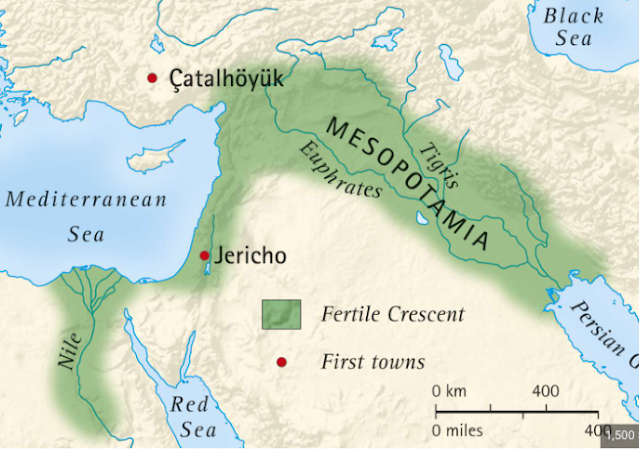Many scholars believe that urbanization—the formation of cities—first occurred in the Fertile Crescent.
How did the Fertile Crescent get its name?
The term “Fertile Crescent” was coined and popularized by James Henry Breasted, an Egyptologist at the University of Chicago. In Ancient Times: A History of the Early World, originally intended as a high school textbook, Breasted wrote: “The earliest home of men in this great arena of Western Asia is…a kind of cultivable fringe of the desert, a fertile crescent having the mountains on one side and the desert on the other.”
The Fertile Crescent is the boomerang-shaped region of the Middle East that was home to some of the earliest human civilizations. Also known as the “Cradle of Civilization,” this area was the birthplace of a number of technological innovations, including writing, the wheel, agriculture and the use of irrigation. The Fertile Crescent includes ancient Mesopotamia.
What Is the Fertile Crescent?
American archaeologist James Henry Breasted coined the term “Fertile Crescent” in a 1914 high school textbook to describe this archaeologically significant region of the Middle East that contains parts of present day Egypt, Jordan, Lebanon, Palestine, Israel, Syria, Turkey, Iran, Iraq and Cyprus.
On a map, the Fertile Crescent looks like a crescent or quarter-moon. It extends from the Nile River on Egypt’s Sinai Peninsula in the south to the southern fringe of Turkey in the north.
The Fertile Crescent is bounded on the west by the Mediterranean Sea and on the East by the Persian Gulf. The Tigris and Euphrates rivers flow through the heart of the Fertile Crescent. The region historically contained unusually fertile soil and productive freshwater and brackish wetlands. These produced an abundance of wild edible plant species. It was here that humans began to experiment with the cultivation of grains and cereals around 10,000 B.C. as they transitioned from hunter-gatherer groups to permanent agricultural societies.
https://www.history.com/topics/pre-history/fertile-crescent



No comments:
Post a Comment